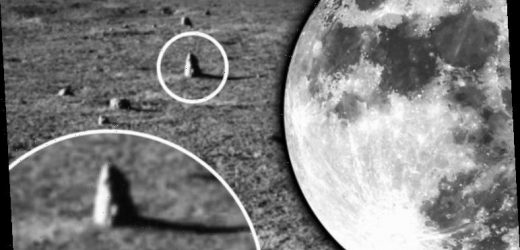NASA cancels 2022 moon rover exploration plans
When you subscribe we will use the information you provide to send you these newsletters.Sometimes they’ll include recommendations for other related newsletters or services we offer.Our Privacy Notice explains more about how we use your data, and your rights.You can unsubscribe at any time.
The Chinese Chang’e 4 probes returned to action for a 27th lunar day on the far side of the Moon on February 6. However, it is what the mission uncovered on the previous lunar day that has most surprised space scientists.
The mission’s Yutu-2 rover stumbled across an unexpected shard-shaped rock, excitedly described by the team as a “milestone”.
It seems to have a shard-like shape and is sticking out of the ground. That’s definitely unusual
Dr Dan Moriarty
In a Yutu 2 diary published by Our Space, Chinese language science outreach channel affiliated with the China National Space Administration (CNSA), mission scientists announced the elongated rock required closer inspection.
Despite the lunar anomaly not looking too unusual to the untrained eye, the discovery has garnered significant interest among space experts.
Dr Dan Moriarty, NASA Postdoctoral Program Fellow at the Goddard Space Flight Center, told Space.com: “It seems to have a shard-like shape and is sticking out of the ground. That’s definitely unusual.
“Repeated impacts, stresses from thermal cycling, and other forms of weathering on the lunar surface would all tend to break down rocks into more-or-less ‘spherical’ shapes, given enough time.
“Think of how rocky beaches wear down stones to smooth, round shapes over time by repeated jostling in the waves.”
The NASA-affiliated lunar geologist added both the rocky shard and the “ridge” running near the rock’s edge indicate this rock is geologically young and emplaced recently.
He said: ”I would definitely guess an origin as impact ejecta from some nearby crater.
“It is possible that a rock with this aspect ratio could have been produced by a process known as spallation, where intact fragments of rock are blown off the nearby surface without experiencing the same degree of shock pressures that the immediate target undergoes.”
However, he added this initial assessment is merely a guess requiring further analysis.
Such detailed examination will involve analysing the mystery lunar rock with Yutu 2’s Visible and Near-infrared Imaging Spectrometer (VNIS) instrument.
This cutting-edge tech is capable of detecting light scattered or reflected from materials to divulge their chemical constitution.
DON’T MISS
Stephen Hawking’s ‘black hole time machine’ proposal to NASA [REVEALED]
Julius Caesar letter exposes ‘secret’ [VIDEO]
Antarctica discovery: Century-old letter reveals shock find [PICTURES]
VNIS has been used to investigate a number of rocks and regolith samples along Yutu 2’s path across Von Kármán crater.
These include similarly strange melt glass specimens and potentially material from the lunar mantle itself.
Professor Clive Neal, a University of Notre Dame lunar expert thinks, based on the images, the specimens are impact ejecta instead of exposed bedrocks.
He said: ”The question I have is are they locally derived?
“Hopefully the spectral data will allow an evaluation of the origin as local or exotic, that is, from outside this area.”
Yutu 2 and the Chang’e 4 lander have already greatly exceeded their design lifetimes of 90 Earth days and one year, respectively.
The intrepid rover has now covered approximately 2,060ft (628m) since its deployment from the lander little more than two years ago.
Source: Read Full Article







